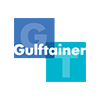Lunes, Oktubre 5, 2015
Ramesh Shivakumaran: More Valuable Principles on Port Management
We continue with our review of the essential principles involved in managing ports and trade transport with a discussion of some vital considerations investors, consultants and managers must seriously face:
1. Understanding the different types of ports and access to ports (natural, man-made, river, estuary) and the diversity of specialist port operations
The type and purpose of the port facilities will determine one's level of financial exposure and managerial approach. Ports dedicated to dry bulk will have a different configuration to those designed for liquid cargoes. Some countries might prevent the use of certain natural waterways for transporting such products as crude oil or natural gas. Hence, if inland sources of such products are only available by land, it will mean providing for port facilities that will cater only to land transportation. Conversely, using only barges to ferry products will entail another set of support facilities.
2. Understanding the highlighted role of ports in a through-transport context – hub ports, feeder/transhipment ports, intermodal interfaces
Specialist port facilities consist of facilities that support the overall port system through auxiliary services, for instance, hub ports that serve as intermediary access-points to other major facilities or provide linkages for other parts of the entire system. These intermodal ports allow movement of products and goods through various modes of transport (land-to- water interface, water-to-land interface or air-to-land interface, etc.) until the final delivery or transfer of goods to their port of destination is accomplished. Movement of materials or goods must follow strategic routes that comply with financial, technical and time constraints to achieve efficient and profitable results.
3. Being aware of the role of national and regional local government institutions in port design, management and operations
Recognizing the primary role of national and regional government agencies play in the construction and operations of part facilities will give a company the advantage of acquiring a thorough understanding of one's corresponding role and duties. Various taxes and fees are required throughout the process of acquiring a license to operate, using and developing of real estate, practicing one's profession and obtaining environmental requirements, for example, will involve coordinating with officials who grant the necessary permits and approvals. The upkeep of infrastructure as well as its day-to-day operations will fall under the legal supervision of these agencies tasked to ensure safety, legality, tax compliance and other technical and administrative standards provided for by law.
4. Understanding the different forms of the ownership structure of ports and of port services; that is, public or private, landlord only, full or part-service provider, including terminal facilities within ports
Various conditions will determine and even complicate the form of ownership of port facilities and the kind of services that will be provided. Leasing the land upon which the port is located will be the best option compared to owning it. Some country will not allow full ownership and will require a local partner to own majority of the land as well as the improvements (usually 60%). How the arrangement will end up will determine the total investment required for the port terminal as well as how it will be operated. For those who have local partners already engaged in some aspects of the operations, one might provide auxiliary or support services that will reduce one's level of investment.
5. Appreciating the use of Free Port/Free Trade Zones as an economics tool
Countries have gained the benefits of opening up Free Ports and Free Trade Zones to allow foreign investors to establish operations in regions where labor and raw materials are cheap and readily available. This has allowed port operators to take advantage of such ports and zones while enjoying the tax relief afforded them as well as their manufacturing partners. Commonly, these zones, however, have a short or limited life expectancy as many companies that use up their tax-holiday contract period move to other regions or eventually pay required customs, thus, losing their advantage over their competitors. A long-term view of entering into such an arrangement is needed to assure that port facilities will have a long duration of operation and continuing profitability.
Ever since Gulftainer Company Limited started its port facilities in Sharjah, UAE, in 1976, with Ramesh Shivakumaran, Group Director Business Services - it has grown into a well-oiled and strong company that can deliver services according to the specifications of its clients. With 8 terminals now in Saudi Arabia, it prides itself of its accomplishments which it has achieved through applying these and other primary principles in port management.
1. Understanding the different types of ports and access to ports (natural, man-made, river, estuary) and the diversity of specialist port operations
The type and purpose of the port facilities will determine one's level of financial exposure and managerial approach. Ports dedicated to dry bulk will have a different configuration to those designed for liquid cargoes. Some countries might prevent the use of certain natural waterways for transporting such products as crude oil or natural gas. Hence, if inland sources of such products are only available by land, it will mean providing for port facilities that will cater only to land transportation. Conversely, using only barges to ferry products will entail another set of support facilities.
2. Understanding the highlighted role of ports in a through-transport context – hub ports, feeder/transhipment ports, intermodal interfaces
Specialist port facilities consist of facilities that support the overall port system through auxiliary services, for instance, hub ports that serve as intermediary access-points to other major facilities or provide linkages for other parts of the entire system. These intermodal ports allow movement of products and goods through various modes of transport (land-to- water interface, water-to-land interface or air-to-land interface, etc.) until the final delivery or transfer of goods to their port of destination is accomplished. Movement of materials or goods must follow strategic routes that comply with financial, technical and time constraints to achieve efficient and profitable results.
3. Being aware of the role of national and regional local government institutions in port design, management and operations
Recognizing the primary role of national and regional government agencies play in the construction and operations of part facilities will give a company the advantage of acquiring a thorough understanding of one's corresponding role and duties. Various taxes and fees are required throughout the process of acquiring a license to operate, using and developing of real estate, practicing one's profession and obtaining environmental requirements, for example, will involve coordinating with officials who grant the necessary permits and approvals. The upkeep of infrastructure as well as its day-to-day operations will fall under the legal supervision of these agencies tasked to ensure safety, legality, tax compliance and other technical and administrative standards provided for by law.
4. Understanding the different forms of the ownership structure of ports and of port services; that is, public or private, landlord only, full or part-service provider, including terminal facilities within ports
Various conditions will determine and even complicate the form of ownership of port facilities and the kind of services that will be provided. Leasing the land upon which the port is located will be the best option compared to owning it. Some country will not allow full ownership and will require a local partner to own majority of the land as well as the improvements (usually 60%). How the arrangement will end up will determine the total investment required for the port terminal as well as how it will be operated. For those who have local partners already engaged in some aspects of the operations, one might provide auxiliary or support services that will reduce one's level of investment.
5. Appreciating the use of Free Port/Free Trade Zones as an economics tool
Countries have gained the benefits of opening up Free Ports and Free Trade Zones to allow foreign investors to establish operations in regions where labor and raw materials are cheap and readily available. This has allowed port operators to take advantage of such ports and zones while enjoying the tax relief afforded them as well as their manufacturing partners. Commonly, these zones, however, have a short or limited life expectancy as many companies that use up their tax-holiday contract period move to other regions or eventually pay required customs, thus, losing their advantage over their competitors. A long-term view of entering into such an arrangement is needed to assure that port facilities will have a long duration of operation and continuing profitability.
Ever since Gulftainer Company Limited started its port facilities in Sharjah, UAE, in 1976, with Ramesh Shivakumaran, Group Director Business Services - it has grown into a well-oiled and strong company that can deliver services according to the specifications of its clients. With 8 terminals now in Saudi Arabia, it prides itself of its accomplishments which it has achieved through applying these and other primary principles in port management.
Linggo, Hunyo 28, 2015
GULFTAINER COMPANY LIMITED HEAD OFFICE HAS GONE INTO PARTNERSHIP WITH THE SHARJAH BASED BEE’AH
7:53 PM
By
Unknown
Gulftainer Ramesh,
Peter Gulftainer,
Peter Richards,
Peter Richards Gulftainer,
Ramesh Shivakumaran Gulftainer,
Ramesh Shivakumaran press release,
Sharjah Ports
No comments
Gulftainer’s recent efforts to increase its recycling efficiency have been rewarded as senior management welcomed a delegation from Bee’ah, who presented a certificate to recognize the Company’s ongoing commitment to improving the environment.
Bee’ah is the Middle East’s largest and award winning waste management company, also based in Sharjah, and their team, Saif Abdulla Al Sharif, Director of the Recycle Business & Collection, Muhammad Musa and Hasim Kathiri, met with Gulftainer’s Managing Director, Peter Richards, Director of Business Services, Ramesh Shivakumaran and Group QHSE Manager, Magimairaj Bose, to present the award and discuss further initiatives.
Some of the initiatives now in place within the Gulftainer workplace include: recycling paper, plastic, e-wastes in the offices and oils, batteries and tyres in the engineering departments to name just a few. The company no longer disposes of any of its wastes into landfill.
Peter Richards, Gulftainer managing director said: “We are delighted to accept this certificate from Bee’ah and to be able to play our part in making the Emirate of Sharjah a greener environment. As a company we believe it is our responsibility to lead by example and to increase awareness of the impact of using the 3 R’s (reduce, re-use, recycle) in the work place and beyond. We hope that these initiatives will highlight just how easy it is to make a difference.”

Bee’ah is the Middle East’s largest and award winning waste management company, also based in Sharjah, and their team, Saif Abdulla Al Sharif, Director of the Recycle Business & Collection, Muhammad Musa and Hasim Kathiri, met with Gulftainer’s Managing Director, Peter Richards, Director of Business Services, Ramesh Shivakumaran and Group QHSE Manager, Magimairaj Bose, to present the award and discuss further initiatives.
Some of the initiatives now in place within the Gulftainer workplace include: recycling paper, plastic, e-wastes in the offices and oils, batteries and tyres in the engineering departments to name just a few. The company no longer disposes of any of its wastes into landfill.
Peter Richards, Gulftainer managing director said: “We are delighted to accept this certificate from Bee’ah and to be able to play our part in making the Emirate of Sharjah a greener environment. As a company we believe it is our responsibility to lead by example and to increase awareness of the impact of using the 3 R’s (reduce, re-use, recycle) in the work place and beyond. We hope that these initiatives will highlight just how easy it is to make a difference.”

Miyerkules, Hunyo 24, 2015
Gulftainer Company Limited Launches Operations At Port Canaveral, Florida
5:40 PM
By
Unknown
Gulftainer Ramesh,
Peter Gulftainer,
Peter Richards,
Peter Richards Gulftainer,
ports around the world,
Ports in UAE,
Ramesh Shivakumaran Gulftainer,
Ramesh Shivakumaran press release,
Sharjah Ports
No comments
The new Canaveral Cargo
Terminal has capacity of 200,000 TEU’s per year with plans for expansion to
750,000 TEU’s
US$100 million investment in
infrastructure and equipment will create 2,000 jobs and contribute US$630
million to local economy
Gulftainer’s
new Canaveral Cargo Terminal at Port Canaveral in Florida, USA, officially
opened for business with a major launch ceremony attended by more than 300
local, state, and national public officials, alongside leaders of business and
trade across the Florida region.
The new cargo terminal opening
comes one year after Canaveral Port Authority signed a 35-year agreement with GT
USA, the US arm of UAE-based global ports and logistics company Gulftainer, to
operate and further develop the container and multipurpose cargo terminal. GT
USA, which has established its headquarters at the Canaveral Port Authority
offices, expects to contribute more than US$630 million to the local economy,
creating 2,000 direct and indirect jobs when fully developed.
The ceremony was attended by
HE Yousef Al Otaiba, Ambassador of the United Arab Emirates to the United
States of America; HE Lana Nusseibeh, Permanent Representative of the United
Arab Emirates to the United Nations; Ambassador Vinai Thummalapally, Executive
Director of the International Trade Administration of the U.S. Department of
Commerce; and Richard Biter, Secretary of the Florida Department of
Transportation.
Canaveral Port Authority
Commission Chairman Jerry Allender, opened the ceremony by saying, “the United
Arab Emirates and the United States have fostered great partnerships in trade,
culture, and education. Today represents one example of our nations’ great
partnership.”
In his opening remarks, HE
Yousef Al Otaiba highlighted the growing trade between the UAE and the US,
commenting: “Bilateral trade between the UAE and US has grown almost 80 percent
since 2005. In fact, last year the US benefitted from a US$19 billion trade
surplus with the UAE, and was the largest market for US goods and services in
the region.”
Al Otaiba added: “Now we’re
here to celebrate another milestone in the UAE’s expanding trade and commercial
relationship with Florida. And I am proud to count the Gulftainer and Port
Canaveral venture among the finest examples of the UAE-US relationship.”
GT USA is part of Gulftainer’s
strategic vision to triple its global cargo capacity in the next ten years
across five continents. The Company is a subsidiary of UAE-headquartered
multinational Crescent Enterprises, which is also active in a number of other
industry sectors.
Badr Jafar, CEO of Crescent
Enterprises and Chairman of Gulftainer’s Executive Board, added: “Container
shipping is a US$6 trillion industry that touches 95 percent of the world’s
manufactured goods, and we are determined to bring much more of that business
to Port Canaveral in the months and years to come. What our experience has
shown us, time and time again, is that a well-run port can be a huge catalyst
for economic growth and development, and we look forward to working with the
Canaveral Port Authority and the local community to ensure that this facility
becomes an indispensable part of global supply chains.”
The unveiling of new terminal
and first container movements included the maiden call of the ‘CMA CGM
Jamaica’, a 264-metre container vessel with a capacity of 4,298 TEUs
(twenty-foot equivalent units) that berthed at the port, as the deepest vessel
to ever call at Canaveral in its 60 year history, before resuming her voyage
across the Atlantic and to Europe. A long-time business partner of Gulftainer,
CMA CGM is one of the world’s leading shipping companies and is associated with
Gulftainer at several locations around the world. Earlier this month,
Gulftainer welcomed CMA CGM’s largest container vessel at its Khorfakkan
Container Terminal in Sharjah, the ‘CMA CGM Kerguelen,’ with a total capacity
of 17,722 TEUs.
Peter Richards, GT USA Chief
Executive Officer and Managing Director of Gulftainer Group, said: “This new
state-of-the-art facility is ready to get to work with two berths, two cranes
and 20 acres of land already developed. In Gulftainer's partnership with the
Canaveral Port Authority, it is our policy to partner with the entire community
and we hope to make this a world-class container terminal servicing the Florida
region, the nation and beyond.”
The Canaveral Cargo Terminal,
which begins operations with a TEU cargo capacity of 200,000 TEUs, has
ambitious plans to triple capacity to 750,000 TEUs. An ideal gateway for
container shipping to the central Florida market and beyond, the new terminal
provides an excellent connection to central Florida’s bustling consumption
centres and growing number of distribution centres. The terminal is able to
turn around cargo imported into Port Canaveral to the Orlando area within one
hours, the fastest transit time when compared to other container terminals in
the State.
Lunes, Setyembre 15, 2014
Peter Richards Gulftainer Company Limited Keeps On Breaking Records
6:18 PM
By
Unknown
Gulftainer Company Limited,
Gulftainer Company Limited United Arab Emirates,
LB Gulftainer Company Limited,
Peter Richards Gulftainer Company Limited,
Ramesh Shivakumaran Gulftainer Company Limited
No comments
OPERATOR’S EFFICIENT SERVICE DRIVES CONTINUED GROWTH.
Gulftainer
Company Limited (GTL), the largest privately owned ports operator in the
world, based in Sharjah, have announced that throughput at their Sharjah
terminals – Khorfakkan Container Terminal (KCT) and Sharjah Container Terminal
(SCT) - has increased by over 23% from January 2012 to July 2012 compared with
the corresponding period last year and are estimated to exceed 3.5 million TEUS
in 2012.
This remarkable performance,
forecast to continue throughout the rest of the year, means that Gulftainer will
continue to break its own records despite the global economy going through yet
another difficult year. The accomplishment, according to published industry
figures, means that Gulftainer’s Middle East ports have been the fastest
growing ports in the region over the last 4 years. While many regional players
posted results of below 10%, Gulftainer has continued to show double-digit
growth.
Gulftainer Group Managing
Director, Peter
Richards, commented, “Gulftainer continues to work closely with our
customers in order to continue this good work. We are absolutely delighted to
have achieved such successful results for the year to date. The volume
increases in KCT and SCT are an obvious reflection of the trust that customers
place in us.”
“These records set by Gulftainer
demonstrate the increased volume of trade in the area and we remain very
optimistic about prospects for the whole region in the coming years. As we
continue through 2012, with the help and support of the Sharjah Ports
Authority, we can look forward to a prosperous year ahead as we improve our
facilities and increase equipment levels to deliver consistent operational
performance to all our stakeholders,” he added
Gulftainer management put this
sustained consistency down to the ability to be flexible and swift to act.
“Gulftainer goes the extra mile to ensure that we are in contact with all
customers on a regular basis, we listen to what they have to say and act on
what we hear. This means that we pick up market information and detail early
and because we are agile in our decision making, we can react quickly in order
to satisfy the demands of our customers and the market,” Richards commented.
An increase in export volume
from the Middle East countries has also resulted in additional full volumes
through Gulftainer’s facilities, requiring terminal layouts to be reviewed and
revised. The co-operation of shipping lines together on services has resulted
in the need for increased dialogue and co-ordination between the terminal
operators and the Lines.
Gulftainer Group has been
operating in the UAE and around the world for over 35 years. In the UAE it
operates three main UAE ports: two on behalf of the Sharjah Port Authority -
Sharjah Container Terminal (SCT) and Khorfakkan Container Terminal (KCT); and
one in Ruwais, Abu Dhabi, on behalf of the international plastics solutions
company, Borouge.
Gulftainer has been able to
maintain a strong position in the UAE through its ports at Sharjah and
Khorfakkan, and KCT was named 'Shipping Port of the Year' at the Annual Supply
Chain and Transport Awards (SCATA 2011) in Dubai. In recent years Gulftainer
has also invested in Iraq, Russia and now Brazil, with the company recently
welcoming the first vessel into its Recife Port facility.
Linggo, Setyembre 14, 2014
Peter Richards Gulftainer Company Limited Sees 24% Increase In 2012 Trade Volumes
6:15 PM
By
Unknown
Gulftainer Company Limited,
Gulftainer Company Limited United Arab Emirates,
LB Gulftainer Company Limited,
Peter Richards Gulftainer Company Limited,
Ramesh Shivakumaran Gulftainer Company Limited
No comments
Gulftainer, one of the world’s
largest privately owned port management and logistics companies has
recorded a 24 per cent overall increase on trade volumes in 2012 when compared
with 2011.
Its Sharjah ports saw the
greatest volumes throughout the year, with Khorfakkan Container Terminal seeing
growth of 28 per cent on its 2011 figures with a staggering throughput of over
3.3m TEU. The consistent organic growth of Gulftainer is the largest
of any Middle East port operator, with trade volumes more than tripling in the
past decade.
The company’s portfolio covers
three UAE operations, Khorfakkan, Sharjah and Ruwais, as well as in Iraq at Umm
Qasr, Recife in Brazil, and the recently acquired Tripoli Port in Lebanon, with
further plans across the Middle East and international territories for 2013.
"The past year has seen
growth across a number of our operations, as well as expansion of current and
new locations,” says Peter
Richards, group managing director, Gulftainer. “Khorfakkan Container
Terminal accounted for a majority share of trade volume and continues to see
phenomenal throughput with 28 per cent growth in 2012 in its own right."
For 2013, Gulftainer has
already moved forward with further expansion plans within existing operations
to allow for greater capacity and the increasing size of vessels now requiring
access to the ports.
"Our figures are
indicative of the UAE’s growing influence as an import and export hub, and even
more so of the east coast’s popularity for containership operators,” continues
Richards. “This is an exciting time for the company, as we increase our
footprint both locally and globally, and we anticipate similar double digit
growth again in 2013."
Biyernes, Setyembre 12, 2014
Peter Richards Gulftainer Company Limited Hosts Inaugural Port Finance International
5:49 PM
By
Unknown
Gulftainer Company Limited,
Gulftainer Company Limited United Arab Emirates,
LB Gulftainer Company Limited,
Peter Richards Gulftainer Company Limited,
Ramesh Shivakumaran Gulftainer Company Limited
No comments
Sharjah-based international
ports management company Gulftainer played host –and sponsor– to the inaugural
Port Finance International Middle East Conference, which was held from 6 to
7 December 2011 at the headquarters of the Sharjah Chamber of Commerce and
Industry (SCCI).
The opening keynote speech for
the conference was delivered by HE Abdullah Al Saleh, Undersecretary of the
Ministry of Foreign Trade for the UAE, and a variety of presentations were
delivered on the finance, investment, and port and logistics environments in
the region and beyond, including one by Gulftainer Group Commercial Manager,
Keith Nuttall.
Building on the success of PFI
events around the world (recently held in London, Istanbul, Singapore, Mumbai,
and Copenhagen) the inaugural Port Finance International Middle East Conference
highlighted current trends and challenges in financing port infrastructure
development, and investigated, analysed and provided guidance on the latest
developments, investments and future plans in the strategically positioned
Middle East region.
Over two days this conference
brought together key industry experts from the Port and Terminal industry and
from the Banking and Legal world to provide delegates with an in-depth
understanding of innovative financing solutions and practical advice. It also
provided an excellent opportunity to meet potential equity and business partners,
as well as senior executives from port authorities, port and terminal operators
and the legal and banking industries to discuss finance options and development
requirements.
Speaking of the importance of
the event, Gulftainer Group Managing Director, Peter
Richards, said, "The ports, terminals and shipping industries are
undergoing major changes as they seek to move forward in a straitened financial
climate and with revenues under pressure and costs rising. This event presented
highly qualified speakers showcasing the latest shipping, port and investment
developments, at a time when the world's economies are facing unparalleled
challenges. As the inaugural Port Finance International Middle East Conference,
the event was a resounding success, and the participants look forward eagerly
to the next event in the region".
Helping participants in the
conference to get a clearer picture of rapidly changing events were, amongst
others, Gulftainer, the National Bank of Abu Dhabi, Merrill Lynch, IFC, RSGT,
Port of Salalah, Qatar Ports, Clarksons, and Abu Dhabi Terminals.
Gulftainer
Group has 35 years experience operating in the UAE and around the world. In
addition to operating three UAE ports: two on behalf of the Sharjah Port
Authority - Sharjah Container Terminal (SCT) and Khorfakkan Container Terminal
(KCT); and one in Ruwais, Abu Dhabi, on behalf of the international plastics
company, Borouge, Gulftainer also operates and manages a number of projects and
investments in several countries, including Iraq, Pakistan, Russia, Brazil,
Africa and Turkey, with other ventures worldwide currently being evaluated.
Gulftainer’s logistics subsidiary, Momentum Logistics, was established in 2008
to take over the Group’s transportation and logistics business and has offices
throughout the Middle East.
Miyerkules, Setyembre 10, 2014
Smooth Sailing - Peter Richards Gulftainer Company Limited
6:01 PM
By
Unknown
Gulftainer Company Limited,
Gulftainer Company Limited United Arab Emirates,
LB Gulftainer Company Limited,
Peter Richards Gulftainer Company Limited,
Ramesh Shivakumaran Gulftainer Company Limited
No comments
Gulftainer, the world’s
largest privately-owned ports operator, is upbeat about the shipping industry
and the company is confident of sustaining strong double-digit growth this
year, its top official said.
The Sharjah-based firm has
seen phenomenal growth throughout 2012, with many expansion plans brought
forward, including the Sharjah Container Terminal, or SCT. It eyes regional and
international markets in 2013 to sustain the business growth in years to come.
“International expansion
remains a focus for Gulftainer in 2013, having confirmed contracts in Russia,
Lebanon and Brazil recently. India, Africa, the eastern Mediterranean and
America remain key focus areas in addition to our existing developments. This
is a strategy we expect to continue with into 2013 and beyond,” Peter
Richards, managing director of Gulftainer, told Khaleej Times in an
interview.
Gulftainer, a subsidiary of
Crescent Enterprises, is a rapidly-expanding, dynamic ports and logistics
company now operating in various parts of the world. The Gulftainer Group
operates and manages ports and logistics businesses in several countries,
including the UAE, Iraq, Pakistan, Russia, Brazil and Turkey.
The privately-owned UAE
enterprise, which was established in 1976, has been particularly active in the
ports and logistics business in international markets. Recently, it announced a
$300 million investment in Russia to develop the Ust-Luga port in Leningrad
Oblast, 110 kilometres from St Petersburg.
The consistent organic growth
of Gulftainer is the largest of any Middle East port
operator, with trade volumes more than tripling in the past decade. —
Supplied photo
“We also expanded our
geographical footprint in 2012 by establishing a new venture, Gulftainer
Brazil, at the Port of Recife in Brazil, which has already received the first
general cargo and container vessels,” said Richards.
He said Gulftainer Brazil
handled its first shipments during the year of both container vessels and
general cargo and brought a new lease of life to the Port of Recife.
“We expect Recife to
experience a record-breaking year in 2013 and Gulftainer will be keeping a
watchful eye over an exciting South American coast line,” he said.
“Likewise, we expect the
operations in Tripoli in Lebanon to experience a successful year; the initial
response back from the shipping lines has been very positive indeed and many of
the lines are eager to support us here as well,” he added.
STRONG GROWTH AHEAD
Richards said 2012 was a
positive year and the company is confident to record strong growth in 2013. The
consistent organic growth of Gulftainer is the largest of any Middle East port
operator, with trade volumes more than tripling in the past decade.
“Both terminals — the
Khorfakkan Container Terminal [KCT] and the SCT — performed exceptionally well
in 2012 and have seen increase of 28 per cent in cargo volumes. Whilst
Khorfakkan serves the region at large, Sharjah provides a very specialised and
valuable service for businesses in Sharjah and neighbouring emirates.”
“Over the past few years, we
have continuously grown at a stronger rate than the global market average. With
new contracts recently confirmed, including at the Port of Tripoli, we would
anticipate that company growth in 2013 will be strong and over 18-20 per cent
for containerised traffic alone. We expect much stronger growth for
non-containerised traffic especially in Brazil and Iraq,” he added.
In reply to a question, he
said the SCT is now hosting berths of a depth of 12.5 metres and 180,000 square
metres of storage, with additional storage facilities planned for 2013.
About Khorfakkan, he said a
new container freight station has been created for additional container packing
and unpacking services, with additional handling equipment to support these
activities.
“At Khorfakkan, there has been
a recent multi-million dollar investment in ship-to-shore cranes,
reachstackers, tugmaster and trailer combinations. Terminal layouts have been
reviewed and revised to ensure the best use of space and facilities,” he added.
In reply to a question, he
said Hanjin-NYK FMX and CSAV Norasia’s Galex services were additional services
secured in 2012, with all now calling at the KCT.
“We have long standing
relationships many of the world’s major shipping lines, including but not limited
to CMA-CGM, UASC, MSC, Hanjin, China Shipping and Maersk Line.”
He said the introduction of
ultra-large container carriers that can be handled at the KCT was a key reason
for Gulftainer’s success in 2012.
“In January 2013, our KCT team
handled the CMA CGM Marco Polo, presently the world’s largest container ship at
16,020 TEUs, in record time.”
He said Sharjah continues to
grow in terms of its position as a business hub for the UAE, particularly
within the industrial sector. Sharjah houses 29 per cent of the UAE’s
industrial industry companies, and contributes eight per cent of the UAE’s
non-oil gross domestic production.
“Gulftainer has always been
proud to have its roots in Sharjah and contribute to its growing economy.”
UAE SHIPPING STAYS BUOYANT
Richards said the UAE’s
shipping industry has generally been buoyant, largely due to the country’s
position as an international business hub and with a significant volume of
cargo being transported through its ports.
“As with any economy that is
highly reliant on the export of crude oil, the shipping industry is also at
risk from any fluctuation in oil prices, however, the stability and
infrastructure of the UAE has helped to increase and secure business.”
“Emerging markets were a key
factor for growth in 2012, and we anticipate this will be the case in the
coming year. Iraq continued to also be buoyant for us, with Umm Qasr’s Iraq
Container Terminal beginning operations. This terminal, equipped with two
ship-to-shore gantry cranes, is expected to become the most efficient dedicated
container facility in the port,” he added.
In reply to a question about
the outlook for shipping industry he said: “We feel that 2013 will be about
targeting growth in the right place, particularly through current emerging markets,
such as South America, where we recently launched operations at the Port of
Recife in Brazil.”
“In the UAE, we are expecting
to continue the positive growth we experienced in 2012 and together with the
support of our customers, believe that another year of double-digit growth has
already begun.”
“We are particularly keen to
see our volumes grow in Sharjah port where we will develop our IT connectivity
between customers and the port community and will continue to offer a range of
value added services to our customer base,” he added.
“We also have some very
significant plans for our presence in the GCC and expect very soon to be able
to confirm an even greater coverage in the area.”
To a question about the
outlook for freight-forwarding business this year, he said the GCC’s transport
and logistics sector grew 10 per cent in 2012, making it a $35 billion
industry.
About the performance of
Momentum Logistics, he said it has seen consistent success since it launched in
2008, and a major milestone for 2013 will be the opening of the Umm Qasr
Logistics Centre, a 750,000 square metres facility adjacent to the Umm Qasr
Port.
“This will provide an
essential link within the supply chain for major energy companies that are
involved in the construction of Iraq’s oil and gas production facilities, as
well as those involved in the mega projects implemented to restore the Iraqi
infrastructure,” said Richards.
The Sharjah Inland Clearance
Depot, the 180,000 square metres bonded facility operated by Momentum, saw 100
per cent occupancy of its warehousing complex, with increases in both dry and
refrigerated containers throughputs.
“The container freight station
continued to see growth from African trade, with companies looking to take
advantage of the bonded facility in order to have export cargo delivered,
consolidated and packed for future export. To keep up with demand into 2013,
the station apron is being extended by some 10,000 square.













